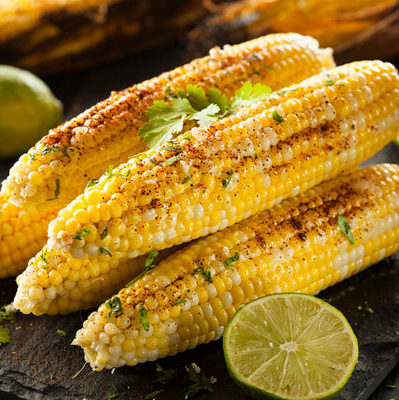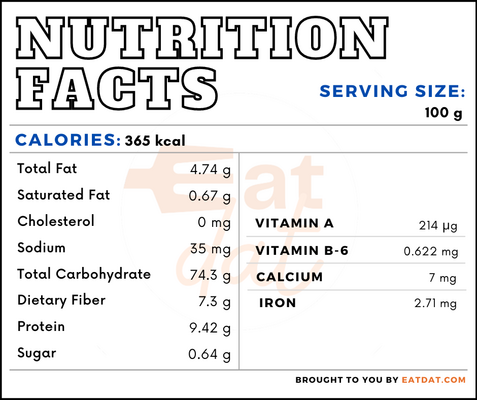
Corn
also known as Maize, Mealie
What is Corn?
Corn is a grain that is consumed throughout the world. The grain is known as corn in North America and Australia, and maize in the rest of the English speaking world. Also, it is known as mealie in South Africa.
- It has an elongated shape with edible yellow kernels studded throughout the surface.
- Maize has a sweetness to it and it is used to prepare cereals, soups, bread, porridge, as well as alcoholic drinks.
The word maize comes from the Caribbean Taino word, mahiz, meaning source of life, while corn comes from the Latin granum, meaning grain. Botanically, it is classified as a grass and is a member of the Poaceae family.
The top 8 most popular brands of this grain are:
- Trader Joe’s
- Sun Harvest
- Raley’s
- First Street
- Del Monte
- Green Giant
- Sunny Select
Origin of corn
This grain was domesticated close to 9,000 years ago by the ancient Mayas from a wild ancestor called Teosinte. It became a staple in Maya and other Central American civilizations. Farmers developed techniques to grow this plant paired with other plants for best growth. The grain spread throughout the Americas in time. Spanish and Portuguese colonists brought it back to Europe, from where it was distributed throughout the world by means of trade and colonization. After rice and wheat, it is the third most important grain in the world.
Nutrition
Nutritional profile for corn (100 g, yellow):

Corn is rich in magnesium, phosphorus, potassium, vitamin A, and lutein + zeaxanthin. Additionally, it contains calcium, sodium, selenium, folate, and carotene. The polyphenols and carotenoids in this grain help in lowering the risk of degenerative diseases and the antioxidants in it may help in preventing cardiovascular diseases and cancers.
Commercial production
The USA is the main producer of maize, followed by China, Brazil, Argentina, Mexico, Ukraine, India, and Indonesia. In the US, a large portion of this crop is used to produce HFCS and feed for livestock.
Maize requires a sunny climate and well-drained soil to thrive. In the Americas, it is often planted along with potatoes, peas, beans, cucumbers, pumpkins, and squash. The crop is ready to be harvested when the ears turn a dark green and the kernels are milky. Then, the ears are harvested in the mornings and immediately put into water to retain sweetness.
It may be stored in the refrigerator for up to 4 days. Frozen varieties may be kept frozen for up to 6 months.
Corn recipes
Maize is a staple food in many cultures and is used to prepare breads, flatbreads, porridge, salads, and even sweets. Here are a few recipes:
- Makki ki Roti
- Crispy Corn
- Elote
- Esquites
- Api Morada
- Humintas
- Curau de Milho
- Tortilla
- Arepa
- Mealie Bread
- Makonde
- Ugali
- Githeri
- Makai Paka
- Bakwan Jagung
- Corn Custard Pudding
- Suam na Mais
- Ginataang Mais
- Maize Idiyappam
FDA regulations
Canned corn is defined by the FDA as the product prepared from clean, sound kernels of sweet corn packed with a suitable liquid packing medium which may include water and the creamy component from corn kernels with the tip caps removed. It falls under the most frequently consumed raw vegetables.
References
Brigit Katz, Rethinking the Corny History of Maize, Smithsonian Magazine, https://www.smithsonianmag.com/smart-news/rethinking-corny-history-maize-180971038/
Steve Albert, How to Grow Corn, Harvest to Table: Plant Prepare Preserve, https://harvesttotable.com/how_to_grow_sweet_corn/
Prasanthi, P S et al. “Compositional variability of nutrients and phytochemicals in corn after processing.” Journal of food science and technology vol. 54,5 (2017): 1080-1090. doi:10.1007/s13197-017-2547-2, https://www.ncbi.nlm.nih.gov/pmc/articles/PMC5380630/
